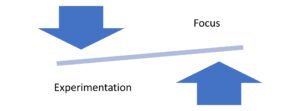With the Jim Joseph Foundation’s racial justice mini-grants to the Jewish Social Justice Roundtable’s (JSJR) now concluded, we are pleased to share learnings, first-person accounts, and a look ahead from Abby Levine, Executive Director, and Roberta Ritvo, Deputy Director, of the JSJR.
In the wake of the racially motivated brutal shootings in Georgia that claimed the lives of eight people, six of whom were Asian women, we believe that our work for racial justice is more urgent than ever before.
When moments like these happen, Jewish organizations that have already had internal conversations about racial justice are well positioned to respond. In 2017, the leaders of the Jewish Social Justice Roundtable collectively acknowledged the work we needed—and still need—to do to make our organizations more racially diverse, equitable, inclusive and just places for staff, board, and lay leaders.
As part of this commitment to racial justice, the Roundtable awarded nearly $100,000 in matching grants to 21 Jewish social justice organizations for projects that address racism and promote racial equity.
These grants, made with support from the Jim Joseph Foundation and Lippman Kanfer Foundation for Living Torah, offer critical resources to embed practices of racial equity in organizational systems and cultures, and to honor the multiracial realities of the U.S. Jewish community.
And then the world changed.
One unprecedented year later after a global pandemic emerged, after racial justice protests sparked a national reckoning, and after an election season unlike any other, we checked in with a few organizations to learn about their work for racial equity during a tumultuous time in the world. Their experiences can inform how others in the field prioritize and approach similar efforts moving forward.
We caught up with Rebecca Eisen, Human Resources Manager at Hazon; Judy Levey, Executive Director at Jewish Council on Urban Affairs; SooJi Min-Maranda, Executive Director at ALEPH: Alliance for Jewish Renewal; and Liz Sweet, Chief of Staff at HIAS.
What made you decide to undertake racial equity work?
Judy Levey, Jewish Council on Urban Affairs: People refer to this past year as being a “moment of reckoning” in the consciousness of our nation. However, this has been the work of JCUA for the past 57 years. As a social justice organization with the longstanding mission of combating poverty, racism, and antisemitism and rooted in the civil rights movement, we have a keen understanding of systemic racism.
What we understood less was how much personal work we have to do as individuals and as an organization to dismantle those systems and embody our highest Jewish values. Our aspirations to change the world around us go hand-in-hand with the need to look within our own community and within ourselves. That is the transformative work that needs to take place in order to ultimately transform institutions.
Rebecca Eisen, Hazon: Hazon is the largest faith-based environmental organization in the US and is building a movement to strengthen Jewish life and contribute to an environmentally sustainable world for all. The climate movement and the movement for racial equity are inherently interconnected because environmental disasters and climate change disproportionately impact communities of color. Hazon cannot work to address the climate crisis, to strengthen Jewish life, or to advocate for systemic change without working towards racial equity with accountability.
Our staff was clear that one crisis did not erase another and we had to talk about racial justice even as a pandemic raged. There was and remains a dramatic hunger to talk about diversity, equity, and inclusion in light of upsetting incidents of police violence and other chronic incidents of racism.
SooJi Min-Maranda, ALEPH: There was interest in our communities in thinking about cultural appropriation in the context of renewal Judaism. Renewal Judaism draws heavily from all cultures/traditions and also has a strong orientation towards religious ecumenism. As we were launching an earth-based Judaism certification program, the timing was right for looking specifically at Indigenous religions. Our trainings provided a Jewish, anti-colonialist framework for understanding how cultural appropriation operates and the kinds of harm it does to both perpetrating and victimized communities.
Brag a little: What’s something you’re proud of that came out of the racial equity work supported by this grant?
Liz Sweet, HIAS: Through our work to promote diversity, equity, inclusion, and justice (DEIJ), we’ve delved into how we, as a staff team, respect each other across all of the differences and vulnerabilities that each person brings to every interaction and meeting. We are more aware, respectful, and understanding of how an individual’s life circumstances may be affecting their work in a way that may not have been as obvious in the pre-Covid era.
When the racial justice reckoning of last summer came to the forefront, our diversity trainings in partnership with the Raben Group were well underway. We felt grateful to already have a container to discuss what was happening out in the world.
Our conversations and learnings inspired a number of different changes to ensure that we are living our organizational values, including:
- establishing a workplace issues resolution process;
- implementing a new quarterly performance management system;
- prioritizing internal recruitment to promote career growth within HIAS;
- mandating training for all managers through The Management Center;
- significantly revising our core values statement to promote a less hierarchical organizational culture, so all staff feel encouraged and welcome to step up and speak up; and,
- most excitingly, creating a new DEIJ manager position to lead training and policy development
Judy Levey, JCUA: I’m proud that we have a much clearer sense of what it means to say we are aspiring to be an anti-racist organization. Our organizing on police accountability has strong leadership by Jews of Color, who serve as public spokespeople, represent JCUA in Chicago-wide coalitions, and help lead our member working group.
JCUA leaders started our Kol Or Jews of Color Caucus in 2017, and in 2019, we started our White Racial Justice Working Group, an eight-month learning cohort. In 2020, we hired Beckee Birger. As our Director of Education & Movement Building, she will lead this work forward.
SooJi Min-Maranda, ALEPH: Our cultural appropriation training, while specific to indigenous culture/colonization, taught concepts that apply to other types of cultural appropriation and issues of erasure, oppression, and colonization. This training helps us step into teaching, living, and engaging in the world through an anti-racist, anti-oppressive framework. Our work is just beginning.
Were there any a-ha moments or learnings that this process sparked?
Liz Sweet, HIAS: The big a-ha moment came from our organizational self assessment. We learned that our staff were having very different work experiences depending on their different identities and where they work within HIAS.
Rebecca Eisen, Hazon: In one exercise, Yavilah McCoy at Dimensions helped Hazon staff explore different “isms” within their affinity group and what that meant for us as an organizational team. One participant shared that this activity “pries open doors to empathy and self-knowledge. It gave us a common framework for thinking about insiders and outsiders across multiple factors that are relevant to our organization and work.”
SooJi Min-Maranda, ALEPH: One realization was the necessity to understand and learn the history of whiteness for Ashkenazi Jews in the United States, so that our white Ashkenazi constituents can safely share their perspectives, based on their life experiences, without defensiveness. Interrogating whiteness in the context of Jewish identity is a complex, nuanced discussion that needs dedicated time and space.
Judy Levey, JCUA: In the past two years, we hired two Kol Or leaders as staff members to lead this work. Our staff is now composed of nearly 25% People of Color and we are working to increase the racial diversity of our board of directors. We realized that in order to grow this pillar of our work, we must invest organizational resources in bringing in the expertise and experience needed to continue to learn and train our members.
If you had the opportunity to press rewind and do it all over again, what do you wish you had known or done differently (other than anticipating a global pandemic)?
Liz Sweet, HIAS: I wish we had started doing the work sooner!
Rebecca Eisen, Hazon: We originally applied for this funding to make Isabella Freedman Jewish Retreat Center more inclusive, to be a hub for Jewish life where thousands of guests of diverse identities can feel as though they belong. Though it was tragic that the pandemic prevented us from focusing there, I am, in the end, deeply grateful that we could use the funds for a training we could apply across the entire organization.
The Roundtable thanks each of these leaders for sharing their insights and even more than that, for the work they are doing each day to promote racial justice. Our work to realize racial justice will continue to evolve against a national backdrop of racist violence and brutality. We know that our work will take time, effort, and ongoing investments. There will surely be setbacks and challenges. Together, we will exercise resilience and value our relationships because we’re in it for the long haul.
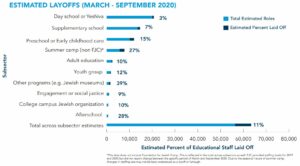
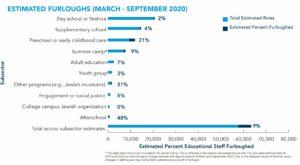
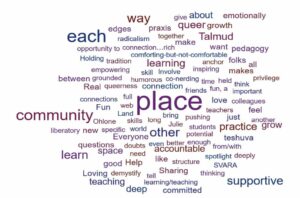
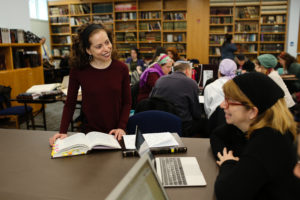 Maharat opened in 2009 with just three students, two employees and a $100,000 budget. Today Maharat has 36 students, 19 employees, and a $2.6 million budget. In just 12 years, Maharat has graduated 49 women who are serving as clergy across the Jewish community in synagogues, schools, hospitals, universities, and Jewish communal institutions.
Maharat opened in 2009 with just three students, two employees and a $100,000 budget. Today Maharat has 36 students, 19 employees, and a $2.6 million budget. In just 12 years, Maharat has graduated 49 women who are serving as clergy across the Jewish community in synagogues, schools, hospitals, universities, and Jewish communal institutions. support. Maharat asks their program interviewees about their support network because “to do this work you have to have a good support network.” Why? Change is hard. Maharat’s strategy is simply “feet on the ground”—having women occupy positions of leadership to show and prove what they can do.
support. Maharat asks their program interviewees about their support network because “to do this work you have to have a good support network.” Why? Change is hard. Maharat’s strategy is simply “feet on the ground”—having women occupy positions of leadership to show and prove what they can do.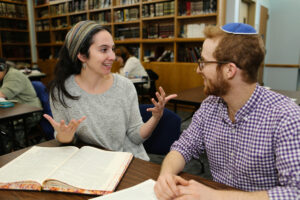 Beyond gender, Maharat is trying to open up Jewish culture—by giving women access to authority, to being teachers, and to being authorities on rabbinic texts. She highlights that they are sending the message that leadership—the structure and power of dynamic leadership—should be more decentralized with more voices:
Beyond gender, Maharat is trying to open up Jewish culture—by giving women access to authority, to being teachers, and to being authorities on rabbinic texts. She highlights that they are sending the message that leadership—the structure and power of dynamic leadership—should be more decentralized with more voices: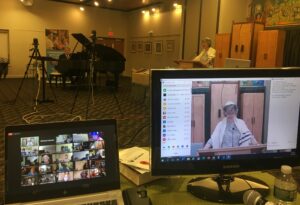
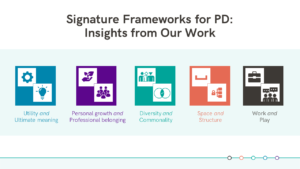
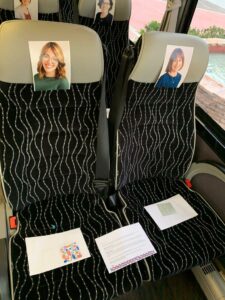 For example, in one seminar that explored the value of partnership, 40 seasoned educators unconventionally began their morning by boarding a “Partner-Ship” bus. At their assigned seat, each participant found a discussion prompt to help them get to know their partner. They arrived at the beach and competed to build sand castles and moats in pairs, experiencing firsthand how they work with someone else. The day continued with chavruta-style learning, and by early afternoon, each participant had a better understanding of what they offer as a partner – and what they seek in a partner. And all of this was done through a playful, dynamic, energizing, and challenging experience.
For example, in one seminar that explored the value of partnership, 40 seasoned educators unconventionally began their morning by boarding a “Partner-Ship” bus. At their assigned seat, each participant found a discussion prompt to help them get to know their partner. They arrived at the beach and competed to build sand castles and moats in pairs, experiencing firsthand how they work with someone else. The day continued with chavruta-style learning, and by early afternoon, each participant had a better understanding of what they offer as a partner – and what they seek in a partner. And all of this was done through a playful, dynamic, energizing, and challenging experience. roundtable, questions surfaced about the prominence that play was given. Would a one-day tour of Manhattan have done the trick? Did too much play detract from the work that learners had come to do? Hearing questions and advice from our PDI colleagues offered valuable perspective that was taken to heart: it’s likely that while the approach may have been correct, the work-play balance was off.
roundtable, questions surfaced about the prominence that play was given. Would a one-day tour of Manhattan have done the trick? Did too much play detract from the work that learners had come to do? Hearing questions and advice from our PDI colleagues offered valuable perspective that was taken to heart: it’s likely that while the approach may have been correct, the work-play balance was off.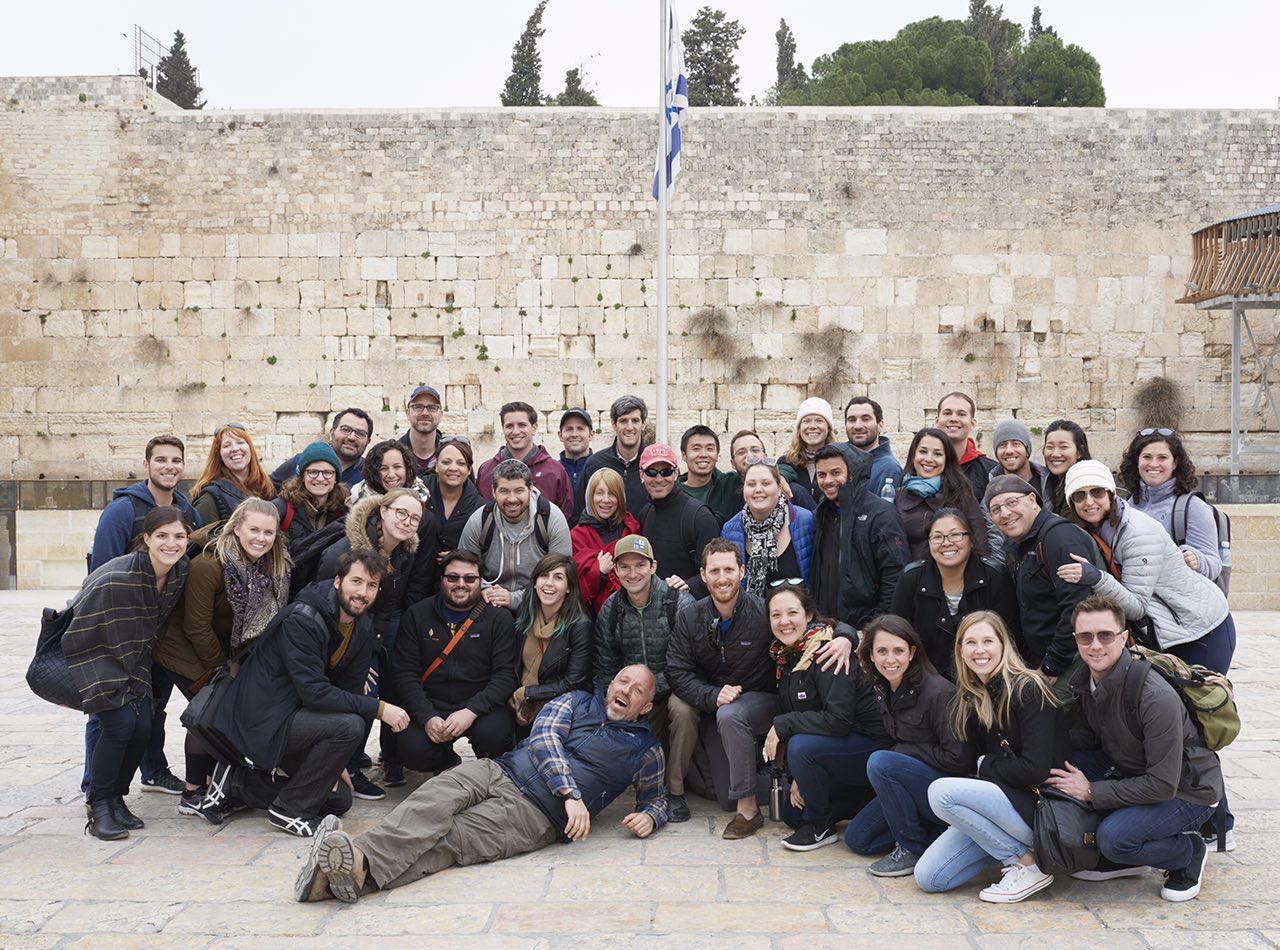 Mike Wise and Avi Rubel conceptualized HMI after the 2013 Pew report on the American Jewish population, which noted the high rate of interfaith marriage and was often defined as a problem in the Jewish community. Mike and Avi wanted to define it as an opportunity to engage young couples by creating a welcoming community for them. Many couples in this life stage do not yet have other couple friends; rather, they often have individual friends from other life experiences. HMI wanted to engage couples while they were still making decisions about their families and their futures—and whether they envisioned a connection to the Jewish community as being a part of that.
Mike Wise and Avi Rubel conceptualized HMI after the 2013 Pew report on the American Jewish population, which noted the high rate of interfaith marriage and was often defined as a problem in the Jewish community. Mike and Avi wanted to define it as an opportunity to engage young couples by creating a welcoming community for them. Many couples in this life stage do not yet have other couple friends; rather, they often have individual friends from other life experiences. HMI wanted to engage couples while they were still making decisions about their families and their futures—and whether they envisioned a connection to the Jewish community as being a part of that.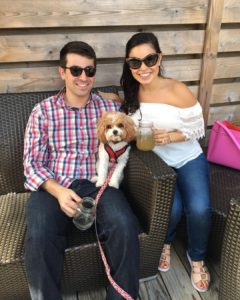 to ensure that anyone is able to travel on their trips. They are also expanding their board and their staff to include more people of color and working towards increasing the diversity of the couples who travel with HMI.
to ensure that anyone is able to travel on their trips. They are also expanding their board and their staff to include more people of color and working towards increasing the diversity of the couples who travel with HMI.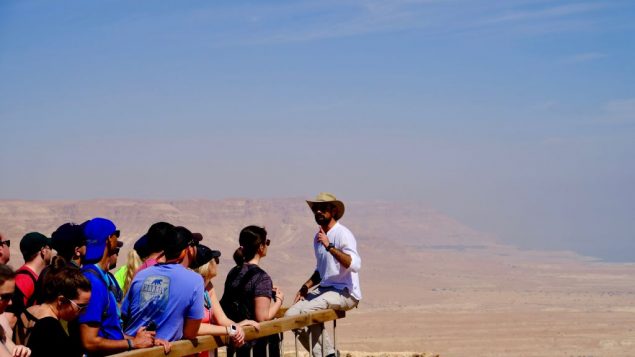 HMI is focused on controlled, intentional growth and ensuring they can deliver the trips and programs that best serve their groups. Currently HMI says no to three couples for every one they accept nationally; they don’t want to add more trips unless they’re set up for meaningful post-trip follow-up, which includes staffing and support on the ground. HMI also has more communities that want to partner, but HMI continues to be deliberate in the communities they select to ensure that the trip is not just an empty experience, but fulfills their goal:
HMI is focused on controlled, intentional growth and ensuring they can deliver the trips and programs that best serve their groups. Currently HMI says no to three couples for every one they accept nationally; they don’t want to add more trips unless they’re set up for meaningful post-trip follow-up, which includes staffing and support on the ground. HMI also has more communities that want to partner, but HMI continues to be deliberate in the communities they select to ensure that the trip is not just an empty experience, but fulfills their goal: